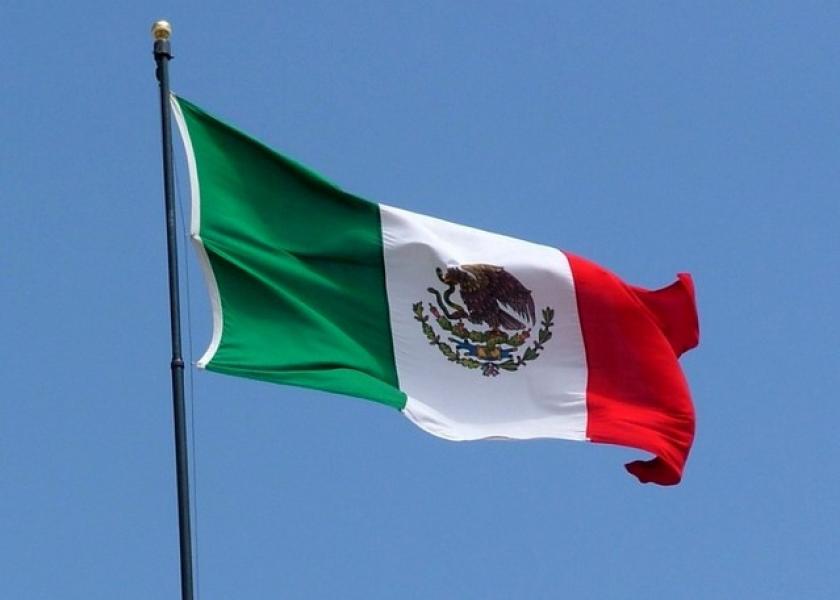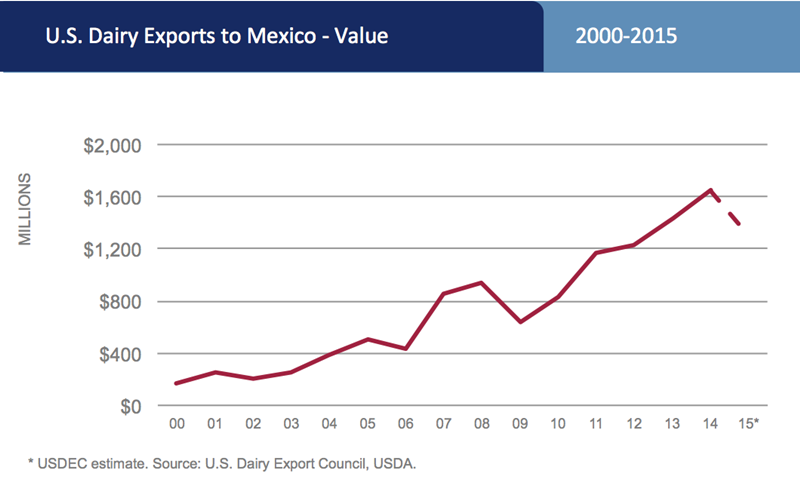Mexico Still Has $1 Billion in Dairy Sales Potential

by Rodrigo Fernandez, U.S. Dairy Export Council
Despite a tradition of cheese use in Mexico and sizable domestic milk production, Mexican dairy per capita consumption remains less than half of U.S. per capita consumption.
It also falls short of many of its Latin American neighbors, including Argentina, Brazil, Chile and Costa Rica.
It’s a point Juan Carlos Pardo emphasized during a presentation at the USDEC Fall Board of Directors and Membership Meeting, Oct. 15 in Chicago.
“We are not a mature market,” said Pardo, president of CANILEC, Mexico’s dairy processor association. Pardo is also the director of corporate affairs for Nestlé Mexico.
Although it varies with geography, average annual per capita dairy consumption in Mexico as a whole equates to about 126 liters (milk equivalent) or 286 lbs. That comes out to around 345ml per day, significantly less than the 500ml per day recommended by the UN Food and Agriculture Organization and less than half of U.S. consumption of 750ml per day. Despite pockets of growth, per capita consumption has stagnated.
Contrast that to per capita soda consumption in Mexico—a nation with one of the highest obesity rates on the planet—at 450ml per day.
Consumption growth would lead to U.S. export growth
The relatively low consumption numbers coupled with potential to better capitalize on dairy nutritional benefits and replace soft drinks herald export opportunity. In Pardo’s words, “The best way to increase exports to Mexico is to grow consumption.”
The surest boost to further consumption is economic growth, but a series of government reforms implemented last year have yet to stoke the economic engine. Until they do, Pardo believes the key to raising demand now as well as laying the groundwork for the future is promotion.
Industry campaigns promoting dairy consumption exist in Mexico but are minimal and not coordinated. CANILEC is working with dairy farmers and the government to develop a landmark school milk program that Pardo believes will help better embed the importance of and desire for dairy early in life.
Pardo invited the U.S. industry, through USDEC, to meet to discuss how the two countries, as a group, could facilitate dairy promotion to not only boost consumption and grow the overall size of the pie, but to build a regional partnership and sustain the current state of play that has seen Mexican dairy farmers and processors expand side-by-side with U.S. suppliers.
Heightened challenge expected with international competition
The need for greater U.S. engagement in Mexico, possibly through such a coordinated approach to promotion, but also via cooperation on regulatory issues, milk production challenges, trade negotiations and other joint areas of interest, is likely to become more pressing in time.
International competition intensified sharply over the past year cutting into U.S. dominance in Mexico. Europe and New Zealand aggressively sought alternative markets as their largest customers (Russia and China) slashed buying.
The United States still holds a solid market share lead in Mexico, but that share fell to 70 percent for cheese (an 8 percentage-point decline) and 87 percent for nonfat dry milk/skim milk powder (a drop of 9 percentage points) over the first eight months of 2015, according to Mexican Customs data.

U.S. suppliers built their commanding position in the market through a combination of hard work and the advantages gained via the North American Free Trade Agreement (NAFTA), which phased out all Mexican dairy tariffs on U.S. goods by 2004. While the Trans-Pacific Partnership provides the United States with dairy market access gains to multiple nations, it also gives Australia and New Zealand a limited volume of tariff-free access to Mexico for certain dairy products. Those volumes are nowhere near the U.S. tariff gains through NAFTA, but will nonetheless heighten competitiveness.
And now the European Union is poised to renegotiate a trade deal with Mexico that could see further erosion of the U.S. NAFTA advantage, as well as restrict U.S. cheese market access to Mexico through obstructive geographic indication limitations.
The challenge is great but the opportunity is too good to miss.
“We believe we can achieve an increase in dairy consumption by at least 30 percent,” Pardo said. “Mexico’s $15 billion dairy market could quickly grow to US$20 billion.”
Exports currently account for around 25 percent of Mexico’s total dairy sector. If Pardo is right, assuming a similar ratio, that’s at least $1 billion in additional business for responsive foreign suppliers.







